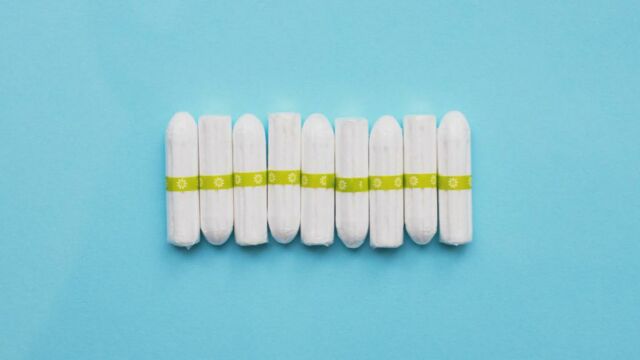How long should your period last?

Most periods last between 3-8 days, but if your period is shorter or longer, it may be a sign of something else.
Periodscan be confusing; we are often taught that they should come at the same time each month and last for roughly one week. Realistically many factors can influence your period causing it to be late or even longer or shorter than usual.
Discover our latest podcast
How long do periods usually last?
Periods are the first and final part of the 28-day menstrual cycle. Every month, if not pregnant, those with a uterus can expect to have their period. In this phase of the cycle, the endometrial lining sheds, causing bleeding that lasts for 3-8 days.
More under this adMore under this adEverybody is different and as such, what is normal for one person isn’t necessarily the same for the other. However, being knowledgeable about your menstruation will help you to identify when something isn’t quite right.
What causes a long period?
Over time you may experience a few changes in your period. Factors such as age, stress and lifestyle can all affect the length, flow, and pain associated with your monthly. If you find your period lasts a little longer than seven days and you have no unusual symptoms, there’s probably no need to be concerned.
More under this adMore under this adHowever, if you find that your period lasts around 10 days or longer, changes significantly in length for three cycles or more, or is much heavier than average, then this is cause to consult a doctor.
A significantly long or heavy period could be a symptom of:
- Pregnancy
- Miscarriage
- IUD or birth control side effects
- Ovulation
- Polycystic ovarian syndrome
- Thyroid problems
- An underlying blood disorder
- Cervical polyps
- Stress
- Medication side effects
- Undiagnosed cervical cancer
- Placenta previa
- adenomyosis
What causes a short period?
The average period lasts around three to five days on the short side. The lifestyle and health factors associated with late or missed periods can often cause shortened menstrual cycles.
More under this adMore under this adMothers also experience short periods during breastfeeding, as prolactin - the hormone which helps produce breast milk - prevents periods from occurring. New mothers can expect their periods to return to normal roughly 9-18 months after childbirth.
Short periods may sometimes be confused for spotting or implantation bleeding. This bleeding is a sign of early pregnancy and is often light and pink or brown in colour, lasting for 24-48 hours. Implantation bleeding occurs around 10-14 days after conception. But, not all people who are pregnant will experience this type of bleeding.
More under this adMore under this adSpotting may also be a symptom of:
- Uterine fibroids
- Polycystic ovarian syndrome
- Ovulation
- Birth control
- Infections such as pelvic inflammatory disease
- Cervical polyps
- Menopause and perimenopause
- Rough sex
If you believe you are experiencing abnormally short periods or spotting, then a consult with a doctor or gynaecologist will be necessary to determine why.
Tracking your period
If you don’t already, tracking your period and symptoms are a great way to figure out what is normal for you and when you may need to consult a GP.
More under this adMore under this adMany mobile phone apps allow users to not only track when their period starts and ends but can also track factors such as mood, energy, digestion, discharge, pain and PMS, among many others. This record can help you to better understand your own body and can also assist your doctor or gynaecologists in narrowing down any potential issues.
By tracking your period, you will also be able to pinpoint when you’re ovulating; if you’re trying to get pregnant, knowing when you are at your most fertile will prove very useful. There is also a common misconception that having sex before or after ovulation will prevent you from becoming pregnant. This is not true; sperm can last in the body for up to five days, making it entirely possible to fall pregnant in the days surrounding the ovulation phase.
More under this ad